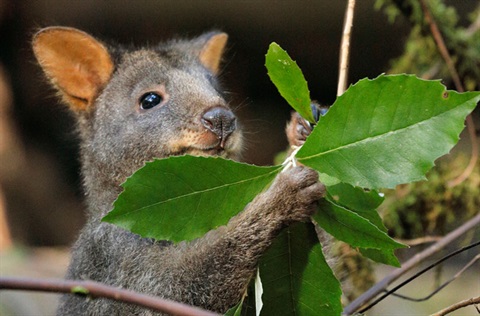Help care for nature

Volunteering with the City of Hobart's Bushcare programis a great way to learn about Hobart's bushland reserves. You'll learn how to protect the native plants and animals that call them home.
You can also help care for nature from your very own home, starting in your backyard or on your balcony.
We need more weed warriors!
Did you know that many of the weedy plants threatening Hobart's bushland reserves came from people's gardens?
What seems like a perfectly harmless plant can turn into an environmental weed if it jumps your garden fence and heads into nearby bushland. We call them garden escapees!
You can easily play a part in protecting Hobart's bushland reserves. Simply dispose of your garden waste responsibly and remove environmental weeds from your garden.
Habitat gardens
Using the plants that are native to your region is a great way to create a habitat sanctuary in your own garden. It will attract local birds and other wildlife, including butterflies.
NRM South has created an excellent native plants of Hobart list that will help you find the right native plants for your garden. They have also created a fantastic Native Gardens guide.
Creating a habitat sanctuary in your garden will provide food and shelter for our native plants, insects, birds and other animals.
You can also create rock gardens, nest boxes and even native bee hotels to provide more shelter for native wildlife. These attract native wildlife into your garden. They provide natural stepping stones between our bushland reserves.
Discover how to create a wildlife garden and encourage bush birds into your garden with NRM South's Bush Birds brochure.
Become a citizen scientist
You don't need a science degree to be a citizen scientist. You just need a curious nature and an enthusiasm for the natural world around us.
Contribute your observations to the online apps listed below. This helps our understanding of Hobart's bushland reserves and the wildlife that rely on them for survival.
Here are just a few citizen science programs you can get involved with:
A more comprehensive list has been compiled by the Australian Citizen Science Association.